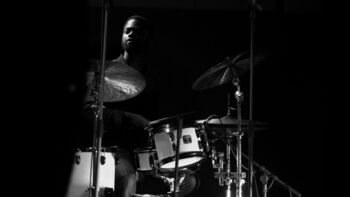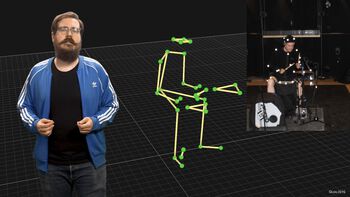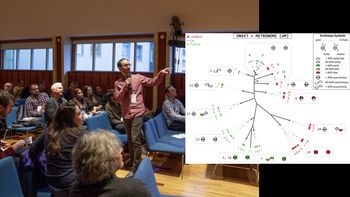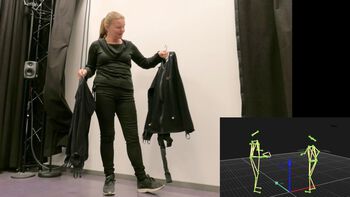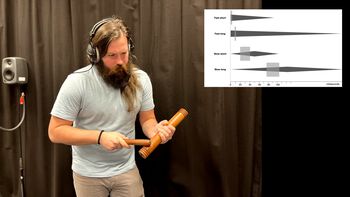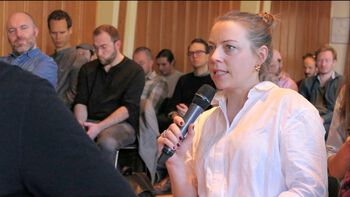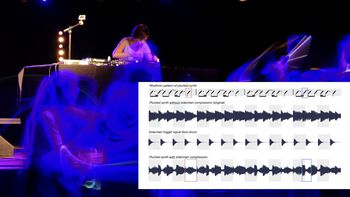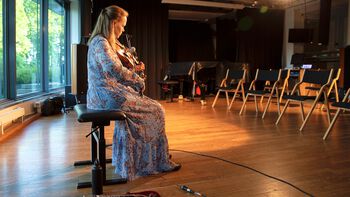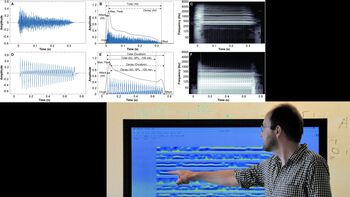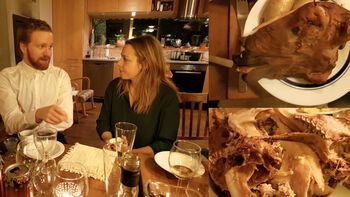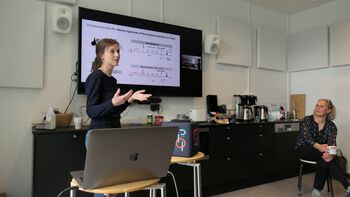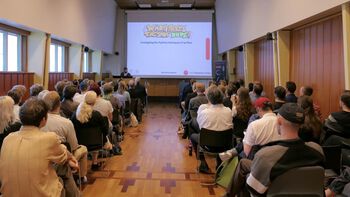TIME
The project Timing and Sound in Musical Microrhythm (TIME) conducted comparative investigations of four different rhythmic genres – jazz, electronic dance music, R&B/hip-hop, samba and Scandinavian fiddle music – in order to gain new insights into the relationship between temporal and sound-related aspects of musical perception and performance. The project ran from 2017 through 2022 and was funded by the Research Council of Norway and the University of Oslo.
-
Mar. 1, 2023
How do musicians and producers combine temporal and sonic parameters (intensity, duration and so on) when conveying microrhythmic feels (laid-back, on-the-beat, pushed)? This was one of the core questions of the TIME project on musical microrhythm.
-
Feb. 28, 2023
PhD fellow Gui Schmidt C?mara recorded audio and motion from 60 professional drummers, bassist and el-guitarists and instructed them to lay back or push their playing. He found that the drummers mainly varied their onset timing to produce the different microrhythmic feels. In contrast, the bassists and el-guitarists systematically combined onset timing with brightness, duration, and other acoustic features.
-
Mar. 1, 2023
In addition to general tendencies regarding how musicians and producers shaped microrhythmic feels in different genres, we were also interested in the individual strategies that they employed. Postdoc George Sioros did a cluster analysis of the drummers' performances and visualized the different strategies as phylogenetic trees.
-
Feb. 28, 2023
Postdoctoral fellow Mari Romarheim Haugen inspects the MoCap suits used when recording samba pandeiro playing and dancing. She found that the characteristic samba swing was present across low, medium and fast tempi.
-
Feb. 28, 2023
The project had an interdisciplinary and cross-cultural research design. Project leader and RITMO Director Anne Danielsen was responsible for overseeing all parts of the project, which included a broad scope of methodological approaches, from ethnographic and observational studies to more purely experimental investigations.
-
Feb. 28, 2023
In a series of perception and synchronization experiments, we asked people to align clicks and taps to sounds with differing shapes. We found a very robust pattern: slow attacks and long duration produce later and wider (more flexible) beat bins.
-
Feb. 28, 2023
The TIME and MASHED projects at RITMO hosted the international workshop Muddy Rhythms and Broken Beats focused on experimental grooves in electronic dance music, neo-soul and hip-hop.
-
Feb. 28, 2023
The project interviewed musicians and producers in five different musical genres in which rhythm is a key aesthetic factor. Results from interviews and analyses of multi-track recordings from the electronic dance music genre were published in Music Theory Spectrum.
-
Feb. 28, 2023
Drummer Ola ?verby from the band Fieh demonstrates how early and laid-back timing can be accentuated by hitting the cymbal in different ways. ?verby was one of the jazz informants in the project.
-
Feb. 28, 2023
Scandinavian fiddle music was one musical genre in the comparative design of the TIME project. Here fiddler Anne Hytta performs at the Rhythm Production and Perception Conference in 2021. Hytta was also interviewed as an informant on sound-timing interactions in the fiddle genre.
-
Feb. 28, 2023
The need for precision at the millisecond level when analyzing microrhythmic events led researcher Olivier Lartillot to develop a new method for estimating the attack region of sounds.
-
Feb. 28, 2023
Research assistant Martin Torvik Langer?d and professor Ragnhild Br?vig in serious discussion at the yearly "Smalahove" (sheep heads) X-mas dinner.
-
Mar. 1, 2023
The project also included investigations of the ways in which different sound shapes influence the temporal precision of beat perception. Postdoc Sabine Leske is in charge of this study which also aims to identify the underlying neurophysiological mechanisms using EEG.
-
Feb. 28, 2023
PhD fellows Gui Schmidt C?mara and Kjell Andreas Oddekalv completed their PhDs as part of the TIME project. Here from Oddekalv's public defence in August 2022.
